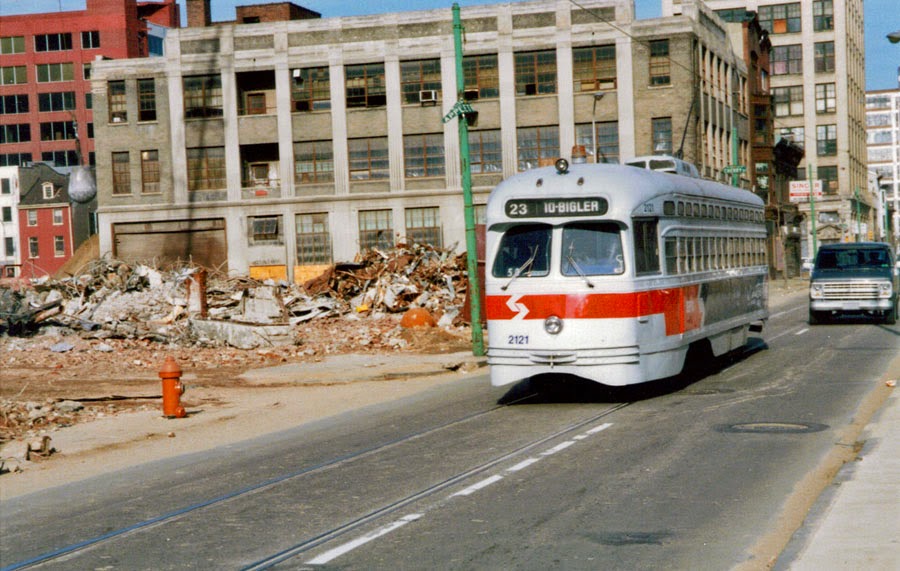But hit Broad and head east, that's another story. Whether it's councilmanic districting or a case of bad development attracting worse development, the neighborhoods of Greater Center City's northeastern quadrant are devoid of anything "central" until you get to Northern Liberties. Strip malls, sterile government facilities, and parking lots line Spring Garden with only an occasional relic to remind us of its industrial and residential roots.
The largest footprint of singular new development is suburban-styled subsidized housing awkwardly flanked by vacant and underutilized warehouses and railroad tracks. Even Callowhill - or the Loft District - with it's proximity to the literal core of the city continues to struggle with an abundance of surface parking, vacant lots, and empty warehouses. Nowhere is the crevasse between east and west more apparent than on North Broad Street, where Gilded Age mansions, churches, and theaters on the westside face unimpressive infill like car washes and auto parts stores.
Still, the northeastern component of Greater Center City has a few gems waiting to be polished, and the future of this district - however it evolves - may depend on their revitalizations.
You don't have to be a history or architectural nerd to be concerned with the area's most priceless resource, the Divine Lorraine Hotel. The Willis G. Hale masterpiece is one of the city's most iconic, infamous, and significant buildings, and despite countless promises, proposals, and praise, its future is still largely in question. EB Reality released a unique rendering that looks like a cartoon from Highlights Magazine, and I mean that in a good way.
Just behind the Divine Ms. L., Broad Street Holdings has proposed its own mixed use complex with a residential component.
For now, this speculation may simply be more hype. EB Reality seems to love the media, and the media is its greatest enabler. Stories about the Divine Lorraine sell ads because we love that building so damn much. But while development has been charging east along Ridge Avenue, it comes to a grinding halt at the Divine Lorraine. It's creeping its way northwest from Callowhill but with a reserved lack of ambition.
Massive projects are massive risks, even in Center City. But Broad and Fairmount isn't quite Center City, at least not yet, and the Divine Lorraine is a beast. There is no question that a resurrected Divine Lorraine would be a massive boon for the vicinity and certainly spawn additional development, but without that development, EB Reality knows it will have to wait for a handsome return. Right now, Philadelphia is just waiting for someone to make the first move.
----------------
It isn't all uncertainty for this depressed pocket of the city, and it may simply be that the city needs to be the party to make that first move. And it's about to be made. Soon the city will be voting on a bill that will allow it to purchase a quarter mile stretch of the abandoned Reading Viaduct from SEPTA, after which several groups will be working together to convert it into an elevated park.
Once a pipe dream to many and a hinderance to others, it looks as though the Reading Viaduct Park will be realized. And considering the city's recent investment in parks, and its final recognition that the improvement of public spaces actually encourages development, it could happen sooner than later.




























